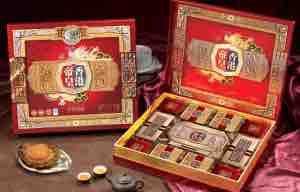

The tradition of eating mooncakes during the festival began in the Yuan Dynasty (1279–1368), a dynasty ruled by the Mongols. From then on, sacrificing to the moon was very popular, and has become a custom ever since.Įating Mooncakes Started in the Yuan Dynasty (1279–1368) MooncakesMooncakes are the most important food of the Mid-Autumn Festival in China. In the Northern Song Dynasty (960–1279 AD), the 15th day of the 8th lunar month was established as the “Mid-Autumn Festival”. Mid-Autumn Became a Festival in the Song Dynasty (960–1279) Later in the Tang Dynasty, not just the rich merchants and officials, but also the common citizens, began appreciating the moon together. The common citizens just prayed to the moon for a good harvest. Music and dances were also indispensable.

They drank and appreciated the bright moon. In the Tang Dynasty (618–907 AD), appreciating the moon became popular among the upper class.įollowing the emperors, rich merchants and officials held big parties in their courts. But at that time the term was only related to the time and season the festival didn’t exist at that point.Īppreciating the Moon Was Popularized in the Tang Dynasty (618–907)Īppreciating the Moon Appreciating the moon with family during the Mid-Autumn Festival has been popular in China for hundreds of years. The term “Mid-Autumn” first appeared in the book Rites of Zhou (周礼), written in the Warring States Period (475–221 BC). The custom of offering sacrifices to the moon originated from worshiping the moon goddess, and it was recorded that kings offered sacrifices to the moon in fall during the Western Zhou Dynasty (1045–770 BC). Sacrificing to the Moon First Recorded in the Zhou Dynasty (1045–221 BC) moon worshipSome Chinese still put out offerings for the moon goddess.Īncient Chinese emperors worshiped the harvest moon in autumn, as they believed that the practice would bring them a plentiful harvest the following year. Then the custom was accepted by the masses and became more and more popular over time. In ancient China, most emperors worshiped the moon annually. To the Chinese, the festival means family reunion and peace.The early form of the Mid-Autumn Festival was derived from the custom of moon worship during the Zhou Dynasty over 3,000 years ago. It is the second most important festival in China after Chinese New Year. The festival takes places on month 8 day 15 of the Chinese calendar. Mid-Autumn Festival is a harvest festival, celebrated in China. What Shouldwe Know About Mid-Autumn Festival?


 0 kommentar(er)
0 kommentar(er)
